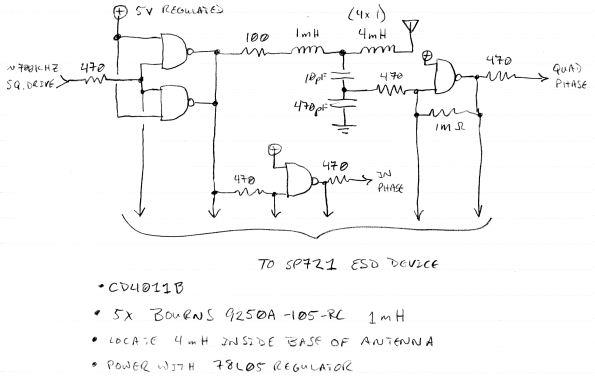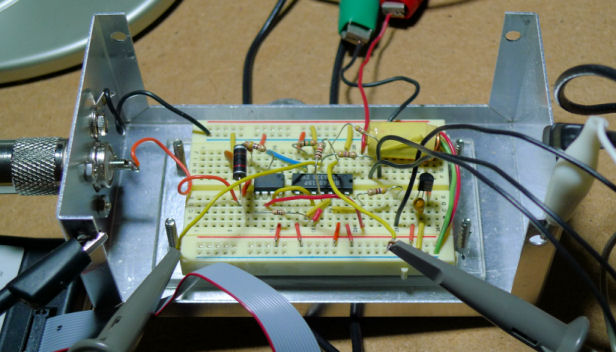"I have nothing against analog per se, but these days it is mainly for the rich retro movement buying class."
Dewster - I have nothing against digital implementation - there are applications where digital implementation allows creation of products which would be unrealizable using analogue.. And it MAY be that the theremin is ready for this approach, and that you can achieve a high-end theremin using digital technology which would be producable at lower cost than an equivalent analogue implementation... Having seen your video now, I am quite impressed!
And yes - certainly for mass production, digital can be the only practical way to go - primarily because analogue usually requires a lot of engineer time to calibrate the instrument, digital has this big advantage.
So, first and foremost, please understand that I am in no way trying to put you or your efforts down - I think that what you are doing is exciting and laudable, and that regardless of what eventually comes from it, you are adding greatly to the pool of knowledge which inspires future improvements and developments.
My first ventures into theremin development were a mix of digital and analogue - I was using PSoC parts which contain configurable digital UM's (in many ways similar to FPGA, but not quite as versatile) and configurable analogue UM's (which are quite impressive, and include amplifiers, D/A, A/D, and a switched capacitor UM which can be configured as capacitance sensing block, filters etc).. and an 8 bit microcontroller with access to the UM's.
The main dissadvantage of the PSoC was the MCU - it was not fast or powerful enough to do any serious real-time computation (the latest ARM based PSoCs are much faster, but I have not played with these - they appeared too late, and I had changed direction by then - I may return to at least evaluate these some time soon).. The (original) PSoCs just missed the mark for my applications - there were not enough UM's to implement everything without some of the tasks being handled by the MCU, and the MCU was not powerful enough to handle the required tasks. In particular, I was not able to obtain high enough resolution on the capacitance sensing fast enough (I could get 'adequate' resolution with a latency of about 20ms, but this hogged most of the MCU's resources, and correcting for linearization and exponentiation with the remaining resources added another 20-30ms, putting the latency way outside of what was acceptable )
I say the above so that you understand that I am not "anti digital" per-se, I have dabbled with it, and I can see the advantages of it - and perhaps if I had managed to obtain the results I was seeking, I would have religated analogue to a few peripheral functions.. as things styand at present, I lhave religated digital to a few peripheral functions, LOL!
I must also state that I have a severe "disability" when it comes to maths intensive programming - I am mathematically dyslexic! Oh, I can do complex maths, but it does not come natural to me - I look at some of the exchanges here and on E-14, and it can take me an hour to decode one line of formulae.. I got another engineer to write the PSoC code to get the exponential from the capacitance value in the PSoC.. So this probably biases me away from using DSP's
And then, there is the SOUND..
I own several synthesisers - Old Roland Juno with digital oscillators and everything else analogue, which sounds great.. Moog Prodigy and Akai AX73 which is are analogue, and sound great, A Korg Karma which is all digital and sounds bloody marvelous, and several digital modules including the Access Virus which is supposed to be an analogue emulation, which all sound 'digital'.. I think it is when one is trying to produce an analogue lead sound, have a lot of portamento or pitch bend, that the difference between a digital and analogue synth really shows.
It was the realization that (for whatever reason) changing pitch was where analogue sounds (to my ears) best, and the fact that theremin pitch is always dynamic, which has convinced me to stay (at least for now) on the analogue path when it comes to theremins.




